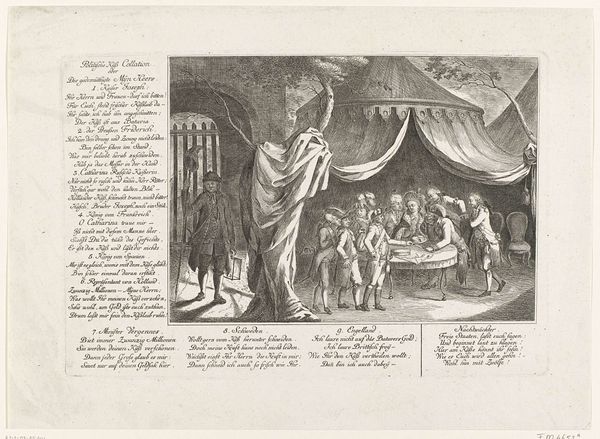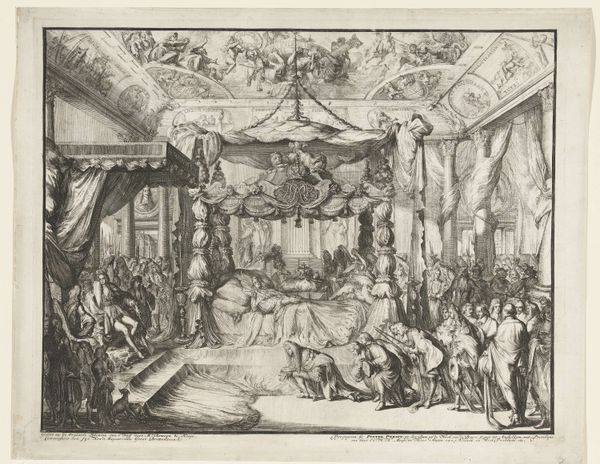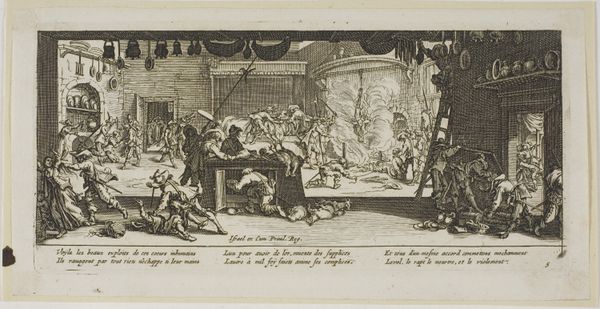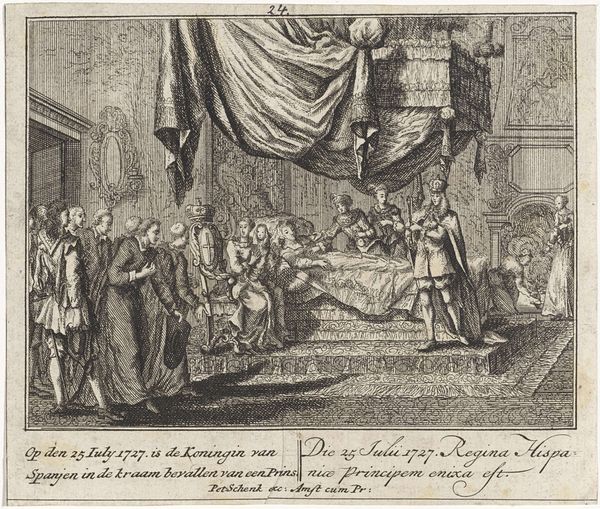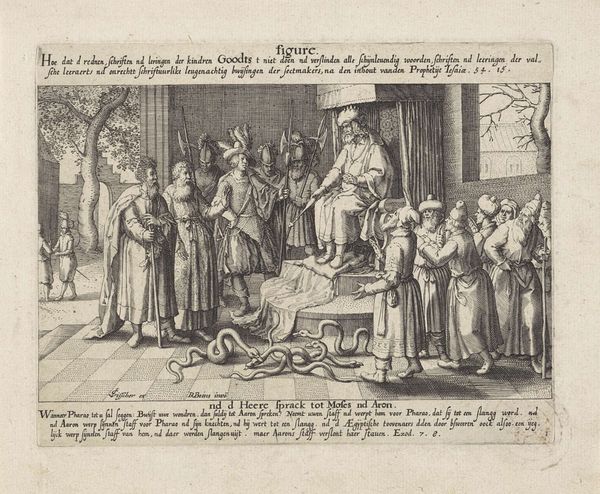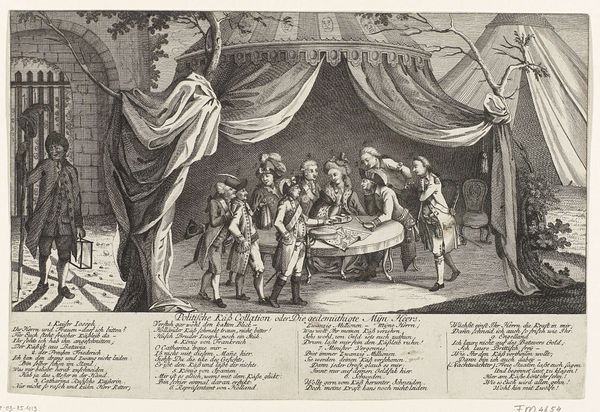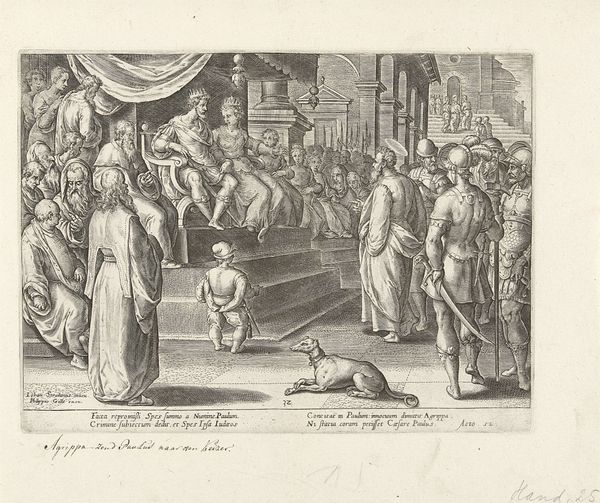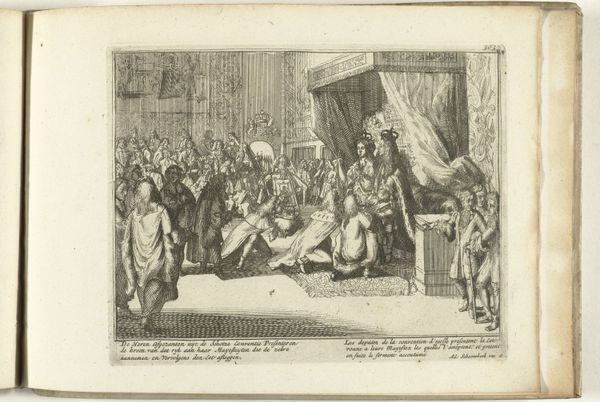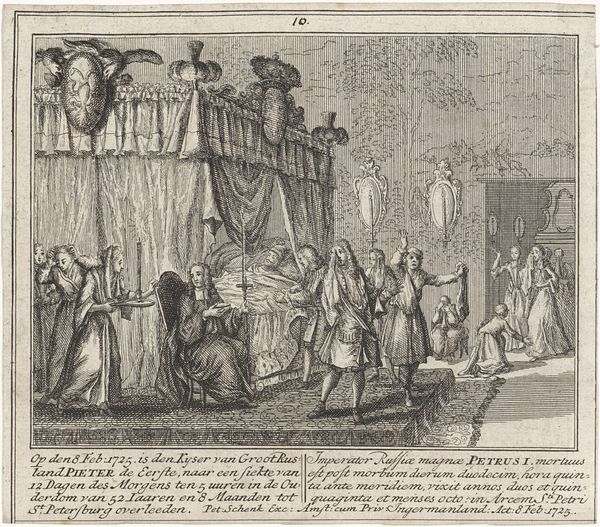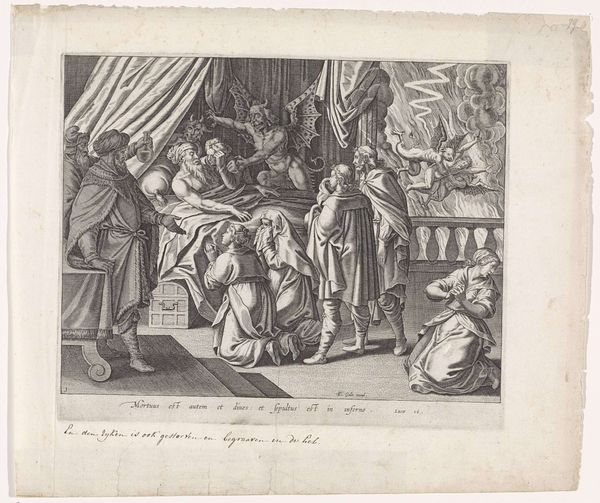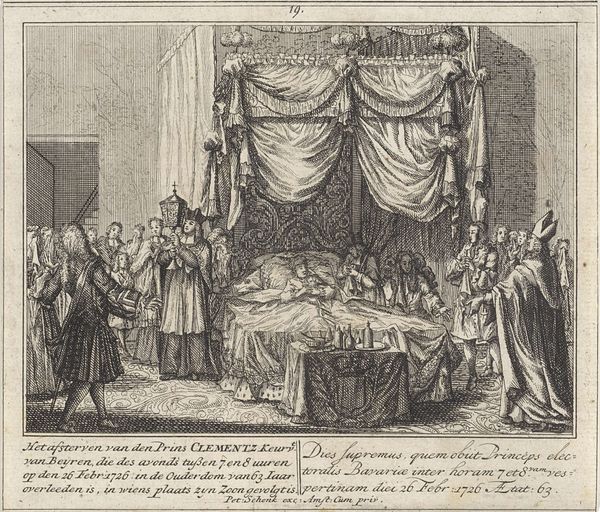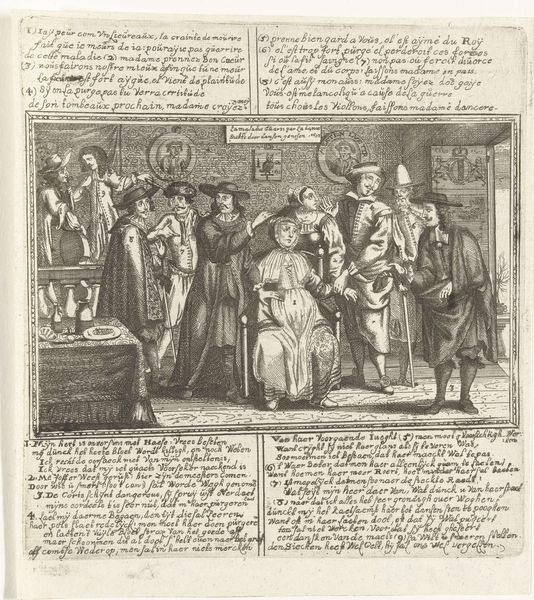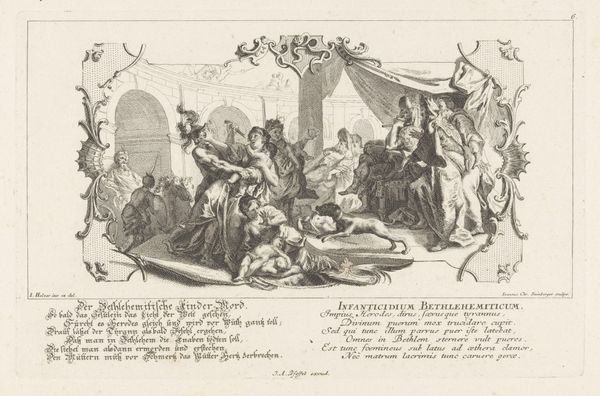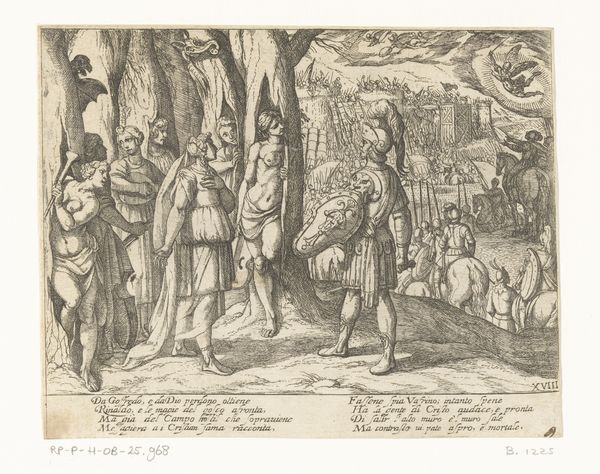
drawing, print, paper, ink, engraving
#
drawing
#
neoclassicism
# print
#
caricature
#
paper
#
ink
#
genre-painting
#
history-painting
#
engraving
Dimensions: height 260 mm, width 368 mm
Copyright: Rijks Museum: Open Domain
Editor: This is an intriguing engraving titled "Spotprent op het Verdrag van Fontainebleau, 1785" created by an anonymous artist. The scene feels rather theatrical. There's this almost ghostly figure dominating the left side, while on the right we see a cluster of people gathered around a table, perhaps plotting. I’m curious – what strikes you when you look at this work? Curator: The ghostly figure immediately arrests attention, doesn't it? It's not just a specter but seems to embody Justice, or perhaps even the betrayed spirit of a nation. See how it gestures toward the tent scene, seemingly a location of secret treaty negotiations. Notice the broken tree to which the ghostly figure stands adjacent, symbolizing the breaking of a moral boundary? The print employs symbolic imagery to condemn what the artist perceives as political treachery. How do you feel that imagery relates to the people grouped by the table in the background? Editor: So, this isn’t just a scene; it’s a commentary. The tent suggests secrecy, while the gesture connects it all. Are these powerful figures ignoring the ramifications of their agreement? It appears those clustered at the table are not focused on the concerns that are visibly apparent with the presence of that standing figure. Curator: Precisely. Consider the clothing, hairstyles; they’re markers of status, of a certain class benefiting, perhaps, from this 'betrayal'. The print seems to be suggesting that hidden agendas of political elites overshadow ethical considerations of everyday people. The artist has layered imagery—light and shadow, figures of authority versus representations of justice. What does this tell you about the piece’s intended audience? Editor: I imagine it would resonate with the common people, who felt betrayed by political decisions. Curator: Absolutely. Political prints like this thrived on such sentiments, using symbolism to bypass censorship and speak directly to public sentiment. Editor: I see. It's a fascinating intersection of history and visual communication. I’m finding a newfound interest in engravings; thank you for shedding a light.
Comments
No comments
Be the first to comment and join the conversation on the ultimate creative platform.
